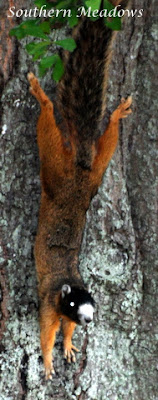Wildflower Wednesday: Camassia
Daffodils, crocuses, snowdrops and tulips are classic bulbs that are found in many spring gardens. A few years ago, I looked for a native alternative to these classics and found Camassia. Camassia is sometimes call a wild hyacinth or quamash. Here in the Southeast they are found on prairies and rich grasslands from Georgia to central Texas. You can see their range on this USDA Map.
The Camassia genus is native to North America and there are six recognized species but only one is native to the eastern part of the country, Camassia scilloides.
These hardy bulbs have racemes with bold blue flowers that appear in late March and continue through April. The star shaped florets open from the bottom up and provide bees with needed nectar and pollen.
 |
| blue flowers with yellow anthers |
The flowers are best paired with other spring blooming wildflowers like columbine, yarrow and coreopsis that will show off the blue petals. They are a great addition to a meadow or open woodland.
In a more traditional landscape add them to a border. They look best when planted in front of perennials that serve as a contrasting background. These bulbs are deer and vole resistant which are major considerations in our garden.
Camassia appreciates our acidic soil and thrives in moist conditions but not long periods of standing water. Once planted the bulbs don't like to be disturb. Over time they will multiply and if they ever need to be divided, the best time is in summer or fall when they are dormant.
Place near a regular seating area to enjoy the delicate, sweet fragrance and watch the bees buzz around.
For more wildflower inspiration visit our lovely host Clay and Limestone.




.png)
